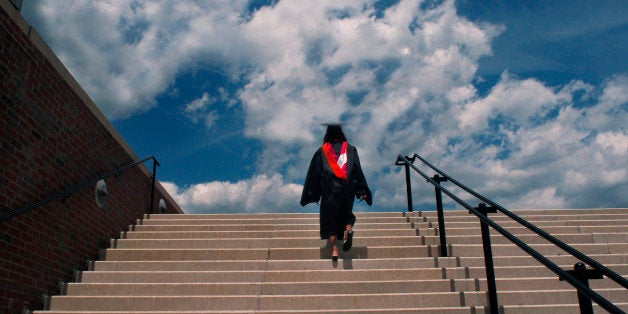
President Obama's goal for America to have the world's most educated citizenry by the year 2020 provides a clarion call to improve outcomes at the nation's 105 historically black colleges and universities (HBCUs). To meet this challenge, and in recognition of the remarkable role of HBCUs in educating African Americans over the past 160 years, President Obama laid out his blueprint to promote their excellence, innovation, and sustainability in Executive Order 13532, established at the beginning of the Obama presidency. In doing so, the president sought to usher in what could become the greatest reform of HBCUs since the 1896 Supreme Court ruling in Plessey v. Ferguson, which led to their early expansion.
To achieve the president's education goals, the nation's college participation rate will have to go from 40 percent of all Americans to 60 percent over the next decade. This educational expansion envisioned by President Obama will necessarily include minority students who are new to higher education, many of whom will have had limited preparation for college study. Many of the new entrants into higher education will be African Americans with nominal preparation for college study. I was one of these students when I enrolled at Morehouse College 25 years ago and experienced firsthand the special mission of HBCUs to successfully educate students with marginal academic preparation. But I also know that there are limitations to what these institutions can achieve. As one former HBCU president said:
Many of the people who have been interested in black colleges have seen this as "We can transform anybody." Well, we can't do that. We have to set very high standards, because the world outside the gates of our campuses requires high standards. We want our degrees to mean quality and high standards.
The leadership dilemma for HBCU presidents is that of broadening access while also advancing high academic standards and strengthening outcomes.
The data suggest that this will be a steep climb for most HBCUs. In a survey of 41 HBCUs by the Journal of Blacks in Higher Education, six-year graduation rates ranged from a high of 77 percent to a low of 7 percent, for an average of 42 percent. The data indicate that at a majority of HBCUs, only one out of every three enrollees goes on to degree completion within six years. Two thirds of entering students do not complete a degree within this timeframe. This contrasts with a six-year completion rate ranging from 95 percent to 64 percent among for African-Americans at selective non-HBCUs. Of the institutions surveyed by the Journal of Blacks in Higher Education, only three had African-American graduation rates equal to or better than the worst-performing selective non-HBCU. The U.S. Department of Education indicates that four-year completion rates at HBCUs have been as low as a staggering 2 percent. By these measures, many HBCUs are not prepared to meet the president's goals.
There are many legitimate reasons that HBCU graduation rates are as low as they are: a century and a half of underfunding, insufficient financial aid for lower- and middle-income students, and admitting deserving students who are nonetheless ill-equipped for the rigors of college study, to name a few. But HBCUs have to accept that their current performance lives up to neither their noble heritage nor their formidable potential. HBCUs also have to accept that the world in which they operate is infinitely more complex today, and by extension they themselves are more difficult institutions to administer effectively. Although many HBCUs have exceptional presidents with progressive agendas, many are hamstrung by largely untrained and ineffective workforces and out-of-touch boards of trustees. HBCUs have to address their dearth of professional, forward-thinking managers and governance in order to take advantage of the White House's allocation of $1 billion aimed at strengthening HBCU capacity.
The decade set to achieve President Obama's aims for HBCUs and the nation will pass quickly. The last major reform of HBCUs followed the Supreme Court's 1954 decision in Brown v. Board of Education, which overturned the historic Plessey v. Ferguson decision, by then in place for half a century. President Obama's order provides a fifth of the time allocated for HBCUs to reform than did Plessey, and half the time it took for Brown's effects to be realized. Consequently, HBCUs are entering the most rapid and critical period of change in their modern histories. HBCUs will be challenged to provide support to thousands more students who are not now in the higher-education pipeline, expand all aspects of their campus infrastructures, hire new staff, revitalize their faculties and curricula, and improve their six-year graduation rates in order to demonstrate the efficacy of public investment. HBCUs must adopt new mindsets of excellence and innovation now in order to participate in the development of the nation and ensure their long-term sustainability.